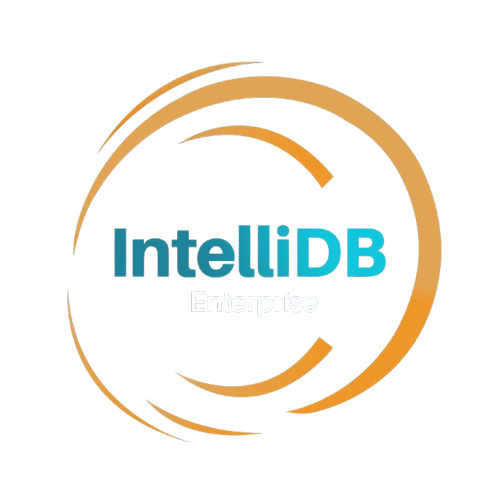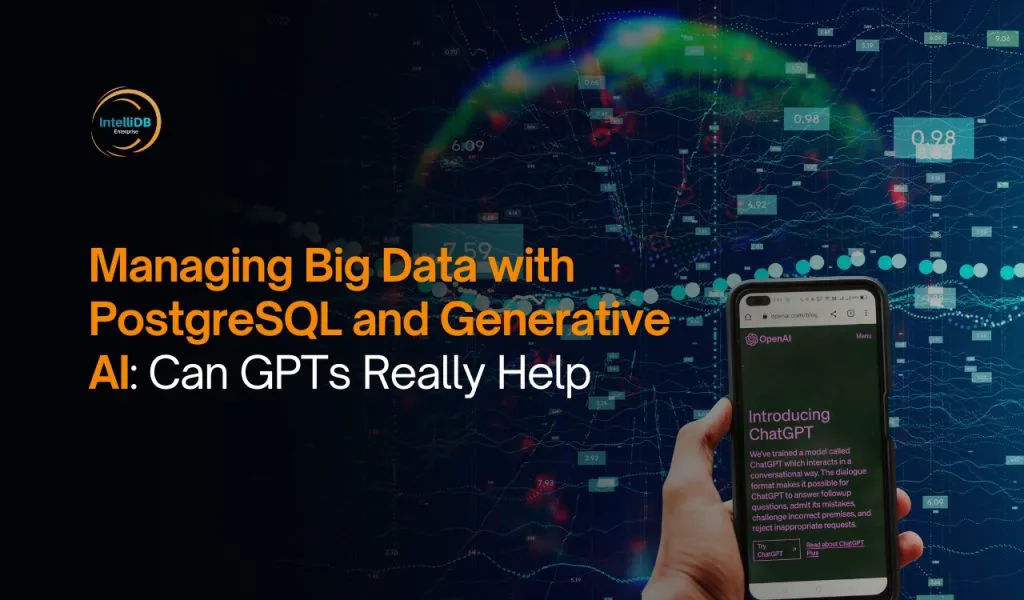In a world that can be accurately described as data-driven, managing large volumes of data requires more than old database technology, it requires intelligence! Many organizations are now thinking about how they can combine the rapidly advancing generative AI models like ChatGPT and GPT-4 with existing and proven database technologies like PostgreSQL. Organizations, and their needs, are advancing in complexity, speed, and volume. The question is no longer if these platforms can integrate—it’s how can they best work together to positively change the way we manage massive amounts of data.
PostgreSQL and the Landscape of Big Data
PostgreSQL is an open-source object-relational database management system that is already widely used, and a preferred option among enterprises, for handling structured and semi-structured data. It is highly reliable, extensible, and performant, and we see it fitting into enterprise environments across the entire lifecycle of data; transactional systems, analytical workloads, real-time applications and so on. As enterprises increasingly instrument themselves, from their logs, sensors, social media streams to their applications, PostgreSQL’s role in managing and querying that data continues to grow.
With big data comes complexity, and that is where AI-inspired support, in particular generative AI, can complement existing data analytic ideas.
The Emergence of Generative AI in Data Administration
Generative AI employs high volumes of text data to learn how to generate human-like responses and utilize human reasoning and natural language understanding. It can also generate code, summarize a document, and solve analytical problems. When being used with GPTs on PostgreSQL databases, your GPT can also help to simplify and expedite many of the tasks that involve complex SQL writing or require a great deal of technical proficiency.
Natural Language to SQL: Democratizing Data Usage and Data Access
One of the great use cases for GPTs on PostgreSQL data is natural language queries to SQL translations.. Natural language querying for data is now possible using a GPT-powered assistant. There is an astonishing amount of work here. A non-technical team member could directly ask a question like, “Show me last quarter’s sales by region,” and receive an optimized SQL query from their GPT assistant. This means less dependency on data engineers and BI specialists for insights, allowing teams, particularly in business areas, to safely explore and pull data themselves in any PostgreSQL environment.
Generative AI for Big Data Analysis and Reporting
Of course, big data doesn’t mean having a lot of data—it is really about maximizing the value of all that information. GPTs can also analyze very large PostgreSQL datasets and produce human-readable summaries, reports, or trend insights that help organizations flatten data complexity and surface meaningful patterns from data without manually slicing and dicing or needing advanced statistical modeling capabilities.
AI-supported Schema Design and Documentation
Keeping accurate documentation along large and changing PostgreSQL schemas can be difficult. Generative AI tools have the potential to automatically document table relationships, field definitions, and data lineage with little to no effort on the part of the developer or architect. In fact, in some instances, GPTs will actually suggest schema changes based on changes in data usage over time, helping developers and desingers on getting ahead of their normal database design thinking.
Performance Optimization Using AI Insights
Performance tuning queries in PostgreSQL can get technical very quickly. After an indexing strategy, a review of the execution plan, resource allocation and monitoring. Immediately a developer’s expectations were erased when identifying inefficiencies in SQL patterns when crossing a decision tree in a relevant or technical context or phrase set. Leveraging GPT probably over time will enable better to improve the performance of their Postgres or times-related databases with less burden on the database administrator.
Data Integrity & Quality Checks
Generative AI can also be leveraged for data validation and identify anomalies in PostgreSQL. Often the GPT can learn from the historical record to identify suspicious values, and unintentional records, and will even suggest proper data clean-up. This is particularly helpful in big data-type operational activity since earlier identification of quality issues will lead to a reduction in downstream impacts on analytics or machine learning workflows.
Limitations and Caution: Know the Limits
Although they have great promise, GPTs are not a silver bullet. They are not domain- and context-aware unless trained on specialized datasets. They can generate incorrect SQL or misinterpret business logic if we do not have any guardrails in place. If we are connecting them to a live production database, we must also consider how to prevent unauthorized access (and undesirable) access to any unauthorized data.
Another major consideration is with data privacy. If we are connecting them to our backend PostgreSQL datasets, we must ensure we are not exposing sensitive data or sending information to a service outside of our organizational environment. While on-prem deployment or utilizing RAG-based architectures offer some assurances, organizations can always rest a bit easier if the data and execution remain local and governed, such as that happened during an AI or ML mission with IntelliDB.
The IntelliDB Way: GPT + PostgreSQL In Vivo
IntelliDB seeks to make generative AI directly accessible within enterprise PostgreSQL environments. Our GPT-style tooling can be embedded within a database, enabling organizations to generate SQL queries, reporting, or optimizations without moving any data out of the PostgreSQL platform. Organizations can now leverage the features an emerging tool like pgvector provides, build RAG pipelines, or utilize the Postgres-native Machine Learning (ML) tools to enrich their data with intelligence while maintaining data sovereignty, privacy, and control.
Conclusion
Generative AI is changing how we relate to data, making it easier to work with, understand, and use. As database technology, like PostgreSQL—a tried and true data store that makes big data manageable—continues to develop, GPTs can create intelligent new workflows that run the full range from automated querying and reporting to performance tuning and schema management.
That said, to realize these benefits, it is important to integrate responsibly—understanding and acknowledging privacy, accuracy, and governance. IntelliDB provides the secure, in-database infrastructure enterprises need to deploy GPT-enabled AI responsibly and at scale.
The future of PostgreSQL is not just big—it is intelligent.
Learn how IntelliDB can unlock the capability of generative AI in your PostgreSQL ecosystem—in a secure and intelligent way.

